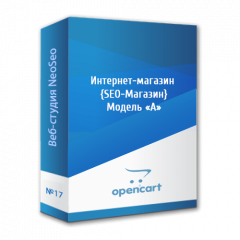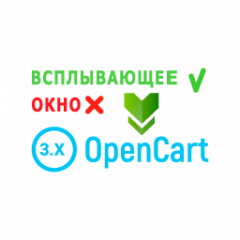- 1
- 2
- 3
- 4
- 5
- 6
- 7
- 8
- 9
- 10
- 11
- 12
- 13
- 14
- 15
- 16
- 17
- 18
- 19
- 20
- 21
- 22
- 23
- 24
- 25
- 26
- 27
- 28
- 29
- 30
- 31
- 32
- 33
- 34
- 35
- 36
- 37
- 38
- 39
- 40
- 41
- 42
- 43
- 44
- 45
- 46
- 47
- 48
- 49
- 50
- 51
- 52
- 53
- 54
- 55
- 56
- 57
- 58
- 59
- 60
- 61
- 62
- 63
- 64
- 65
- 66
- 67
- 68
- 69
- 70
- 71
- 72
- 73
- 74
- 75
- 76
- 77
- 78
- 79
- 80
- 81
- 82
- 83
- 84
- 85
- 86
- 87
- 88
- 89
- 90
- 91
- 92
- 93
- 94
- 95
- 96
- 97
- 98
- 99
- 100
- 101
- 102
- 103
- 104
- 105
- 106
- 107
- 108
- 109
- 110
- 111
- 112
- 113
- 114
- 115
- 116
- 117
- 118
- 119
- 120
- 121
- 122
- 123
- 124
- 125
- 126
- 127
- 128
- 129
- 130
- 131
- 132
- 133
- 134
- 135
- 136
- 137
- 138
- 139
- 140
- 141
- 142
- 143
- 144
- 145
- 146
- 147
- 148
- 149
- 150
- 151
- 152
- 153
- 154
- 155
- 156
- 157
- 158
- 159
- 160
- 161
- 162
- 163
- 164
- 165
- 166
- 167
- 168
- 169
- 170
- 171
- 172
- 173
- 174
- 175
- 176
- 177
- 178
- 179
- 180
- 181
- 182
- 183
- 184
- 185
- 186
- 187
- 188
- 189
- 190
- 191
- 192
- 193
- 194
- 195
- 196
- 197
- 198
- 199
- 200
- 201
- 202
- 203
- 204
- 205
- 206
- 207
- 208
- 209
- 210
- 211
- 212
- 213
- 214
- 215
- 216
- 217
- 218
- 219
- 220
- 221
- 222
- 223
- 224
- 225
- 226
- 227
- 228
- 229
- 230
- 231
- 232
- 233
- 234
- 235
- 236
- 237
- 238
- 239
- 240
- 241
- 242
- 243
- 244
- 245
- 246
- 247
- 248
- 249
- 250
- 251
- 252
- 253
- 254
- 255
- 256
- 257
- 258
- 259
- 260
- 261
- 262
- 263
- 264
- 265
- 266
- 267
- 268
- 269
- 270
- 271
- 272
- 273
- 274
- 275
- 276
- 277
- 278
- 279
- 280
- 281
- 282
- 283
- 284
- 285
- 286
- 287
- 288
- 289
- 290
- 291
- 292
- 293
- 294
- 295
- 296
- 297
- 298
- 299
- 300
- 301
- 302
- 303
- 304
- 305
- 306
- 307
- 308
- 309
- 310
- 311
- 312
- 313
- 314
- 315
- 316
- 317
- 318
- 319
- 320
- 321
- 322
- 323
- 324
- 325
- 326
- 327
- 328
- 329
- 330
- 331
- 332
- 333
- 334
- 335
- 336
- 337
- 338
- 339
- 340
- 341
- 342
- 343
- 344
- 345
- 346
- 347
- 348
- 349
- 350
- 351
- 352
- 353
- 354
- 355
- 356
- 357
- 358
- 359
- 360
- 361
- 362
- 363
- 364
- 365
- 366
- 367
- 368
- 369
- 370
- 371
- 372
- 373
- 374
- 375
- 376
- 377
- 378
- 379
- 380
- 381
- 382
- 383
- 384
- 385
- 386
- 387
- 388
- 389
- 390
- 391
- 392
- 393
- 394
- 395
- 396
- 397
- 398
- 399
- 400
- 401
- 402
- 403
- 404
- 405
- 406
- 407
- 408
- 409
- 410
- 411
- 412
- 413
- 414
- 415
- 416
- 417
- 418
- 419
- 420
- 421
- 422
- 423
- 424
- 425
- 426
- 427
- 428
- 429
- 430
- 431
- 432
- 433
- 434
- 435
- 436
- 437
- 438
- 439
- 440
- 441
- 442
- 443
- 444
- 445
- 446
- 447
- 448
- 449
- 450
- 451
- 452
- 453
- 454
- 455
- 456
- 457
- 458
- 459
- 460
- 461
- 462
- 463
- 464
- 465
- 466
- 467
- 468
- 469
- 470
- 471
- 472
- 473
- 474
- 475
- 476
- 477
- 478
- 479
- 480
- 481
- 482
- 483
- 484
- 485
- 486
- 487
- 488
- 489
- 490
- 491
- 492
- 493
- 494
- 495
- 496
- 497
- 498
- 499
- 500
- 501
- 502
- 503
- 504
- 505
- 506
- 507
- 508
- 509
- 510
- 511
- 512
- 513
- 514
- 515
- 516
- 517
- 518
- 519
- 520
- 521
- 522
- 523
- 524
- 525
- 526
- 527
- 528
- 529
- 530
- 531
- 532
- 533
- 534
- 535
- 536
- 537
- 538
- 539
- 540
- 541
- 542
- 543
- 544
- 545
- 546
- 547
- 548
- 549
- 550
- 551
- 552
- 553
- 554
- 555
- 556
- 557
- 558
- 559
- 560
- 561
- 562
- 563
- 564
- 565
- 566
- 567
- 568
- 569
- 570
- 571
- 572
- 573
- 574
- 575
- 576
- 577
- 578
- 579
- 580
- 581
- 582
- 583
- 584
- 585
- 586
- 587
- 588
- 589
- 590
- 591
Configuring the module Unloading on price aggregators for the online shop {SEO-Shop}, OpenCart 2.x, 3.x, ocStore
The contents
Module installation NeoSeo Unloading on price aggregators
To install the module “NeoSeo Unloading on price aggregators” should:
- Go to admin panel and click on “Extensions”->”Feeds”:

- In the list of modules that opens, select “NeoSeo Upload to price aggregators” and click the “Install” button:

- Go to the “Add-ons” -> ”Add-ons Manager” section and click on the “Update” button in the window that opens:

This completes the installation of the module and you can proceed to configure the export.
Configuring the module “NeoSeo Unloading to price aggregators”
2.1. General module settings
Module status - an option with Enabled / Disabled values that determines the status of the module
Export formation - an option that determines the type of file creation:
- on request - the file will be generated each time you click on the link. The best option when unloading not a lot of information.
- scheduled - the file will be generated according to the schedule. For this, a link to the generation script must be added to the scheduler on the server. This type of formation must be used when generating a large file size.

When choosing to create a file according to the schedule, a link will be displayed that must be added to the scheduler.
Debugging is an option with the Enabled / Disabled values that defines the logging status of the module operation. If you need to analyze the progress of export generation, you need to enable this option.
2.2. Format Settings
The module is preloaded with the most popular formats:
- facebook.com,
- google merchant,
- hotline.ua,
- hotline.ua,
- yml
- yml + color + size
To create a new format, go to the Formats tab in the module settings and click the button to create a format.
After clicking the button, a form for creating a new format will appear. The form contains two fields:
Format - field for the name of the format.
XML code - a field for entering a format template. The template is created based on Twig syntax. Available template variables are listed below or on the Fields tab in the module settings.
The list of template variables:
- {date} - Date of export. Default current date
- {url} - URL URL
- {currency} - Currency of offers (set on the exports tab)
- {categories} - Array of export categories
- {category} - Array of export category
- {category.id} - Category ID
- {category.parentId} - ID of the parent category
- {category.name} - Category name
- {offers} - Array of export goods
- {offer} - Array of export goods
- {offer.id} - Export ID
- {offer.url} - Product URL
- {offer.price} - Product price
- {offer.currencyId} - Commodity currency (set on the exports tab)
- {offer.categoryId} - Product category identifier
- {offer.name} - Product Name
- {offer.description} - Product Description
- {offer.model} - Product model
- {offer.vendor} - Product seller
- {offer.vendorCode} - Seller code
- {offer.image} - Array of product image links
- {image} - Link to the product image
- {offer.options} - Array of product options
- {option} - Array of product options
- {option.name} - Name of the product option
- {option.value} - Product option value
- {option.available} - Product Availability
- {offer.attributes} - Array of product attributes
- {attribute} - Array of product attribute
- {attributes.name} - The name of the attribute
- {attributes.value} - Attribute value
Consider the format structure using the popular YML format as an example.
{% for category in categories%} - Enumerating an array of categories
{% endfor%}
{% for offer in offers%} - Enumerating an array of products
{% if offer.oldprice%}
{% for image in offer.image%} - Enumerating an array of product images
{% endfor%}
{% for attribute in offer.attributes%} - Enumeration of product attributes
{{attribute.value}} - Attribute value
{% endfor%}
{% endfor%}
2.3. Export setup
The module pre-installed exports with default settings for the most popularry sites:
- ava.ua,
- facebook.com,
- google merchant,
- hotline.ua,
- hotprice.ua,
- nadavi.net,
- market.yandex.ru,
- price.ua,
- prom.ua,
- rozetka.com.ua,
- torg.mail.ru
On the Exports tab in the module settings contains a table with a list of existing exports in the system. Let us consider in more detail the structure of the table and the purpose of each column.
Export is the name of the export.
Format - the name of the format used in the export.
Export Status - Export is enabled or disabled.
Link - a link to the export file (the type of link depends on the type of formation). This link must be added in the office of the price aggregator.
Link for manual export formation.
Link when generating exports on request.
Image cache generation - the (Generate) button for generating the image cache. Speeds up file generation if original images are disabled in the export. The acceleration is due to the fact that the images in the cache will be generated in advance, and not during the exchange.
Action - button to edit or delete export.
To create a new export, go to the Export tab in the module settings and click the create export button.
After clicking the button, a new export creation form will appear. The form contains many settings. Let's consider each in more detail.
Export status - an option with the On / Off values that determines the export status. If you do not need to use export, disable it.
Format - a list of formats that exist in the module (Formats tab in the module settings)
Export - name of export
File name - will be displayed in the url where export will be available. It is filled automatically when entering in the Export field.
Shop - a list of stores from which to unload goods.
List of trusted ip addresses - enter your personal ip address or the IP server of the price aggregator so that no one else has access to your goods.
Export language - a list of languages that are available in the store. In the option, you must select the language in which the descriptions of the goods and categories will be downloaded.
Use main category - display in {{offer.categoryId}} the ID of the parent category, and not the first category from “Show in categories”.
Categories used - which categories will be uploaded to the export built-in or alternative categories that must be created in advance. How to create alternatives is described below.
Categories - a list of store categories or alternative categories. You must choose which categories to upload. If categories are not selected then all will be unloaded.
Manufacturers - a list of store manufacturers. If manufacturers are not selected, then everything will be unloaded. If manufacturers are not in the store, then the goods may not be unloaded.
Unload goods - manual list of goods. You can select the goods to be unloaded.
Do not unload goods - black list of goods. Select the goods that do not need to be unloaded.
Offer currency - a list of available store currencies. You must choose in which currency to unload the goods.
Use original images - an option that determines whether to download original images or resized images from the cache.
Product image width - width of the product image. The option is available if the Use original images option is disabled. Measured in pixels, the recommended value is 600.
Product height - the height of the product image. The option is available if the Use original images option is disabled. Measured in pixels, the recommended value is 600.
The maximum number of images is the limit of images that are uploaded for one product. Most often, aggregators accept no more than 10 images per product.
Replace line break
,
with \ n - this option is responsible for replacing line break.
Fine tuning SQL - a field for fine tuning the selection. For example, to select goods in stock or goods with a price greater than 1000. Specify any SQL expression using the p prefix. "For example p.price> 100 or p.price> 100 and p.quantity> 0"
SQL for data preparation - a field for preparing data before uploading. For example, it is necessary to assign all products to a specific manufacturer or to replace some parameter before unloading. Indicate the series of SQL queries that will be performed before generating the data. All requests must be separated by a semicolon - ";"
2.4. Work with alternative categories
Not all price aggregators accept goods or the structure of categories in the form in which they are in the online store. Often sites like hotline.ua require goods to be unloaded according to the category structure that exists on hotline.ua. But do not redo the whole site because of this?
In order to solve this problem, a functional was created to create a tree of alternative categories and to distribute goods among them.
In short, it looks like this:
A category tree is created that corresponds in structure to what is on the price aggregator.
Sort products into alternative categories.
In the export settings, select the unloading of alternative categories.
Profit - and the site operates in its categories, and the download receives the necessary ones.
Now consider all this in more detail.
2.4.1. Manual creation of alternative categories
To create a tree of alternative categories, go to the Catalog section - Multiple Export Categories.
In this section you can create an unlimited number of categories.
It is important to follow the rule: A parent category must be created for each price aggregator. For example, you need to create your structure on two sites: Hotline and Yandex.Market.
First you need to create two categories that will have the name of the site (in fact, you can name them differently, the main thing is that you understand which price aggregator the future category tree should belong to).
To create a new category, click the create category button
The form for creating a new category has two fields:
Category name - enter a category name.
Parent category - a list of existing categories that were created earlier. If a category must have a parent, you must select it from the list.
The creation resulted in two main categories:
For example,
- Yandex.Market should contain a category such as bedroom furniture
- Hotline should contain a category such as a Kitchen Set, and a Kitchen Set - Accessories.
Supplement the category tree

As a result, we get such a tree of categories
2.4.2. Import alternate category tree
To create a tree of alternative categories, go to the Catalog section - Multiple Export Categories.
In this section you can create an unlimited number of categories.
It is important to follow the rule: Before importing the category tree, a parent category must be created for each price aggregator.
You can download an example file with the desired structure here.
Consider importing categories for Hotline.
To import categories, click the “Update Directory” button.
After clicking, the form for downloading and processing the file will be shown.
In the “Parent category” field, select the category into which you want to import the category tree from the file.
In the “File” field, select the file to be processed.
Then you need to click the “Process” button.
As a result of processing, all categories from the file will be placed in the Hotline category.
2.4.3. Distribution of goods into alternative categories
Before distributing goods into alternative categories, it is necessary to create an alternative structure and select the unloading of alternative categories in the export settings (the procedure is described above).
To distribute goods into alternative categories, you need to go to the Catalog - Multi-Export Links section.
The section provides the ability to redefine categories by categories and mass.
For each export, it is possible to distribute goods by category. To do this, select the export at the top of the section.
In order to define a product in an alternative category, it is necessary to select the desired category opposite the product. All settings are applied without reloading the page.
In order to massively identify products in an alternative category, it is necessary to mark products in the list and select a category. All settings are applied without reloading the page.
The ability to distribute goods into alternative categories is also implemented in the form of product editing.
To do this, go to the Catalog - Products section, select the product of interest, go to its editing.
On the Links tab, a field with the ability to change the category will be displayed.
UPDATE from 08/05/2019
Added the ability to restore default export format settings without having to reinstall the module. To do this, click on the “Formats by default” button on the formats tab.
Agree to overwrite data.jpeg)
After which you will see a message about the successful completion of actions.jpeg)
UPDATE from 08/06/2019
Added the ability to control the behavior of the module in the absence of a picture of the exported product. The module can either skip the missing image or give a stub image instead (no_image.png). To do this, in the export settings, set the appropriate value for the “Image skip” field..jpeg)
The default value for the field is “Skip."
UPDATE from 08.08.2019
Added the ability to set a margin on the cost of goods and the option price when unloading. To do this, go to the settings of the export you need and set the values for the following fields:
Type of mark-up - determines how the mark-up will be calculated (fixed value - the price of the product or option will be changed by the fixed number you specified; percentage - the price of the product or option will be changed by the amount of percent you specify).
Product markup - the value used in calculating the markup on the product.
Product Option Markup - The value used to calculate the price of the product option.
Allowed as a valueIn the fields “markup on goods” and “markup on product options” indicate negative values. In this case, the price of the product or option will be accordingly reduced.
If tax calculation is enabled in your store’s settings, then taxes are calculated after markup calculation.
UPDATE from 08/22/2019
Added option to access the generated export file if direct access to the “download” folder is closed.
When using scheduled export generation, on the “Exports” tab in the table with a list of existing exports in the system, the Link field now contains two types of links:
The first link is required to receive the upload file if access to the “download” folder is denied. When you click on this link, the upload file will be downloaded to your computer or will be read by the corresponding price aggregator when accessing this link.
The second link is necessary to open the upload file through a browser or to read it with the corresponding price aggregator. By clicking on this link you can view the upload file, provided that the “download” folder is open for access:
UPDATE from 08.24.2019
A new format and export of besplatka has been added for uploading commodity items to the platform besplatka.ua.
 You use the link for import in the personal account of the Free website. It must be added in the “Import” section.
You use the link for import in the personal account of the Free website. It must be added in the “Import” section.
UPDATE from 01.11.2021
Implemented the ability to display information about the opportunity to purchase goods by installments for opencart 2.1. Withdrawal is possible with the module "Loans from Privatbank and Monobank" (ukrcredits)
The revision was made for HOTLINE.
To display such information in a format, you need to write in the format:
<sales_notes>{%if offer.ukrcredits_type %}installment=true from=({{offer.ukrcredits_type}}){% else %}installment=false{% endif %}</sales_notes>
or:
{%if offer.ukrcredits_type %}
<payment type="installment" from="{{offer.ukrcredits_type}}">true</payment>
{% else %}
<payment type="installment">false</payment>
{% endif %}
More details about the upload format in the documentation
We hope you find this article helpful.
Always happy to help,
NeoSeo Team.





